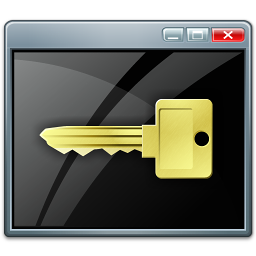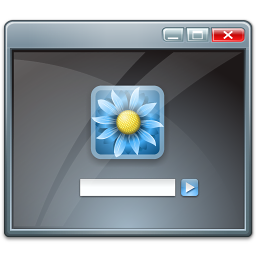- Details

The OpenInsight Authentication Module (OAM) builds upon the legacy OpenInsight security processes and provides additional enhanced industry standard security processes. OpenInsight v10 by default utilizes this new enhanced login security policy. System administrators can choose to disable enhanced login security policy and retain legacy login processing instead.
The module provides support for login policies including locking out of users after a definable number of unsuccessful attempts, password construction requirements, etc. Sensitive data for policy and user information is stored in AES encrypted records. In addition, the OAM records ("journals") successful and unsuccessful login attempts, changes to policies and changes to user information.
Administrators will configure login policies, and set up user information, for all applications that require this enhanced security. End users will log into enhanced security applications twice - once via the normal OpenInsight log in process, and then through the enhanced security screen. If desired, administrators can hard code the password and application name (in the desktop "shortcut") to remove the end user requirement of logging in via the normal OpenInsight log in process, or - should the network infrastructure support it - Revelation Software recommends that OpenInsight Single Sign-On (SSO) is also enabled for these systems.
The user interface components included in this implementation of the OAM are a master Policy Configuration window, the Authentication User Maintenance window, the User Password Maintenance window and the Reset Application Password window.
The Policy Configuration window is used to define and maintain the enhanced policy configuration.
The Authentication User Maintenance window is used to create and maintain individual user settings such as expiration dates and disable until dates, as well as to reset the user’s password.
The User Password Maintenance window is used by the individual user to change his or her password.
The Reset Application Password window is used by System Administrators to reset the password to the default application user.
Documentation
- Details
NetOI - Developing .NET Applications for OpenInsight
Using the NetOI .NET assembly, you can code entirely in Visual Studio (or your development environment of choice), and develop a Windows application that uses OpenInsight as its data source. The NETOI assembly contains classes to communicate with the OpenInsight Engine Server (the Server class); open and communicate with files (the OIFile class); and manage records and selectlists (the OIRecord and OISelectList classes). Using NETOI, you can perform all the basic file I/O needed to use OpenInsight.
RevDotNet
RevDotNet functionality is contained in a series of APIs that OpenInsight programmers can call to create and manipulate .NET classes. These can be either visible classes (like Tree Controls, ListView Controls, etc.) or functional classes (like encryption classes, etc.). You must first establish which assemblies you wish to use, and then you may create objects from the classes in those assemblies. Once you've created an object, you can determine its methods, properties, events, etc., and invoke those methods, set and get those properties, register for those events, etc.
- Details
OpenInsight Single Sign-On (SSO)

Single Sign-On (SSO) allows OpenInsight users and system administrators to simplify their OI security and administrative tasks. By configuring SSO, OpenInsight users can be authenticated via traditional OpenInsight methods, via Windows security, or via a combination of both.
- Details
OpenInsight OEngineServer

The Revelation Software OEngineServer is a java application designed to:
1. Listen (on a configurable tcp/ip port) for requests from various client applications;
2. Start up, manage, and terminate OpenEngines (OEngines) - the database engine for OpenInsight;
3. Route requests and responses from the clients to the OEngines
It manages communication with the OEngines via Revelation Softwares' REVCAPI interface (through a "Native Methods Interface"). This means that, although java is a cross-platform language and the EngineServer per se can be run on any support java platform, we are in practice limited to Windows platforms unless/until a REVCAPI-like interface is available in any other environment.
It manages communication with the various clients via tcp/ip, using a protocol first described for the "JD3" open source project. This protocol has been extensively extended for the EngineServer, but at its heart it consists of an 8 character "length" string, followed by the actual message content. The content is typically a command code, followed by a delimiter, and then any other parameters needed for that command code.
The EngineServer can also perform some operations independent of any client requests - specifically, a "startup" process, "shutdown" process, and "timer" process can be executed on any OEngines that are created, and an overal "startup" (also known as "coldstart") process can be defined to run when the EngineServer is first started.
The EngineServer is configurable via the "eserver.cfg" configuration file (located in the OI directory), which contains overall server settings as well as default settings for the various types of client connections.The types of client connections available include:
mode -1: "JD3" (stateless, block mode communication, responding to the JD3 list of commands);
mode 0: "Block" (stateless, block mode);
mode 1: "Char" (stateful, character interaction);
mode 2: "Web" (stateless, block mode)
In addition, it is possible to create an additional type of OEngine:
[mode n/a]: "Phantom" (stateful, character interaction - must be spawned from another OEngine)
The client connection type controls how the EngineServer communicates with the OEngine, as well as what is expected of the OEngine itself. When a request comes in while in a "stateless" mode, the EngineServer looks for an OEngine with the specified "signature" (based on the app, user, password, and dispatch routine) in a queue it maintains of "available OEngines"; if one is found, then it is tasked to execute the request, and then released back into the queue. The _client_ is responsible for maintaining any required state information; _any_ of the stateless OEngines may be used to satisfy _any_ requests from _any_ client (so long as it has the required "signature"). Stateful connections, on the other hand, are dedicated to an individual client; the EngineServer maintains a 1-to-1 connection between the client and the OEngine, and thus subsequent requests from the same client will always go to the same OEngine.
The number of OEngines kept in the "available queue", as well as when OEngines should be shut down and removed from the "available queue", is configured in the eserver.cfg file. As mentioned above, it is also possible to configure routines to run at startup, shutdown, and on a "timer-like" event, for these stateless OEngines.
Revelation Software-available clients include the CTO/AREV64 clients (using "char" mode), OECGI2/OECGI3/OECGI4/OI4Web (using "web" mode), and NetOI (using "JD3" or "web" mode); the OIJio library is also available for java developers wishing to communicate with the EngineServer.
Note that the EngineServer is occasionally referred to as the "Socket Server" or "OESocketServer" interchangably.
Running the EngineServer
The EngineServer can be run from the DOS command line via the following command:
java -jar oesocketserver.jar {-l <configfilename>} {-d <debuglevel>}
where <debuglevel> is an optional number ranging from 1 to <n>; the higher the number, the more detailed information is displayed.
Revelation Software also provides a "wrapper" to enable the java command to run as a service; it is installed via the "installapp-nt.bat" routine located in the OESERVER subdirectory of the OpenInsight directory. This bat file reads configuration information from the wrapper.conf file located in the conf subdirectory.
Note that it is possible to run multiple EngineServer services on a single Windows system, but that to do so requires a modification to the installapp-nt.bat file to read a modified wrapper.conf (specifically, the wrapper.console.title, wrapper.ntservice.name, and wrapper.ntservice.displayname should be unique for each service)


